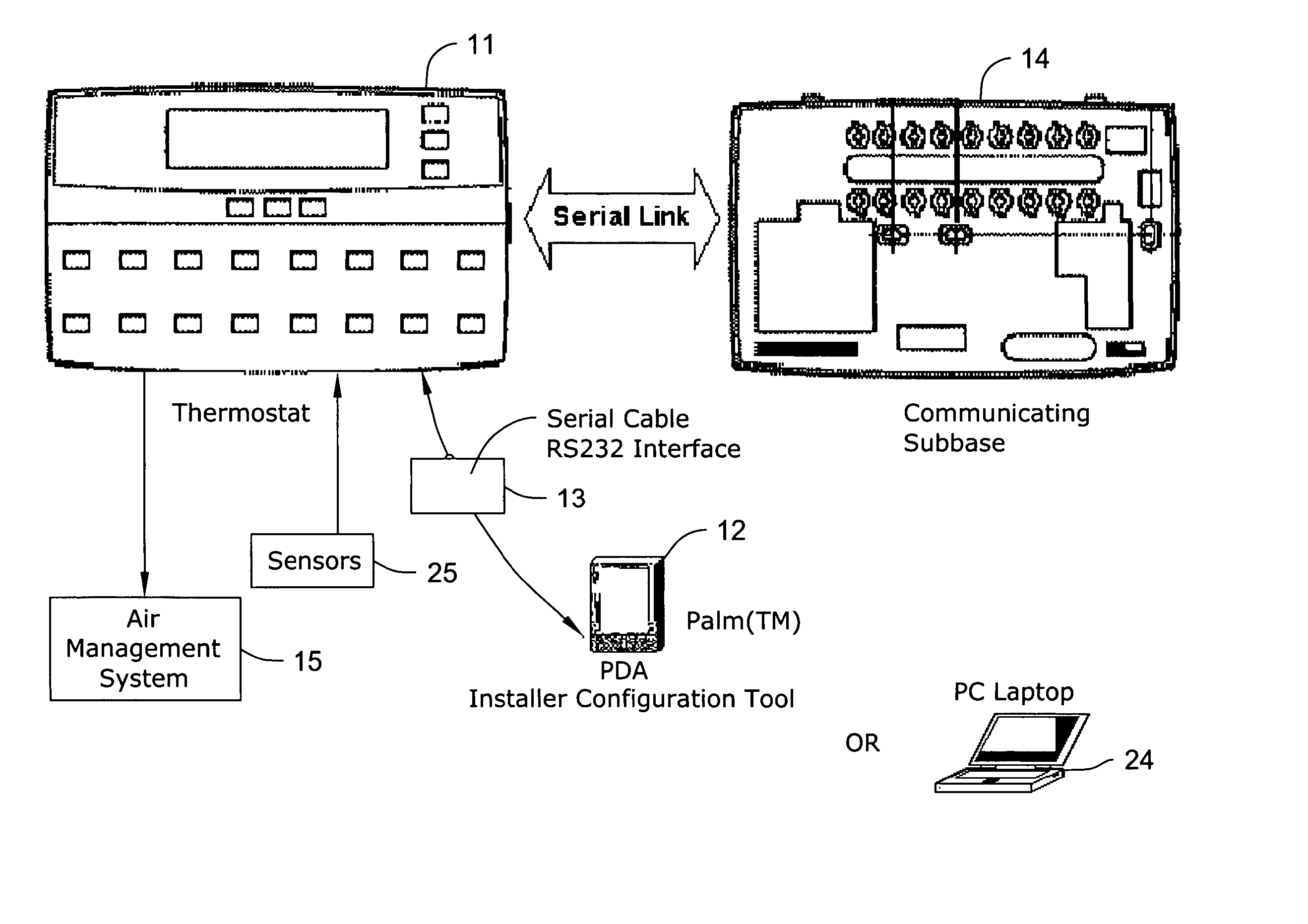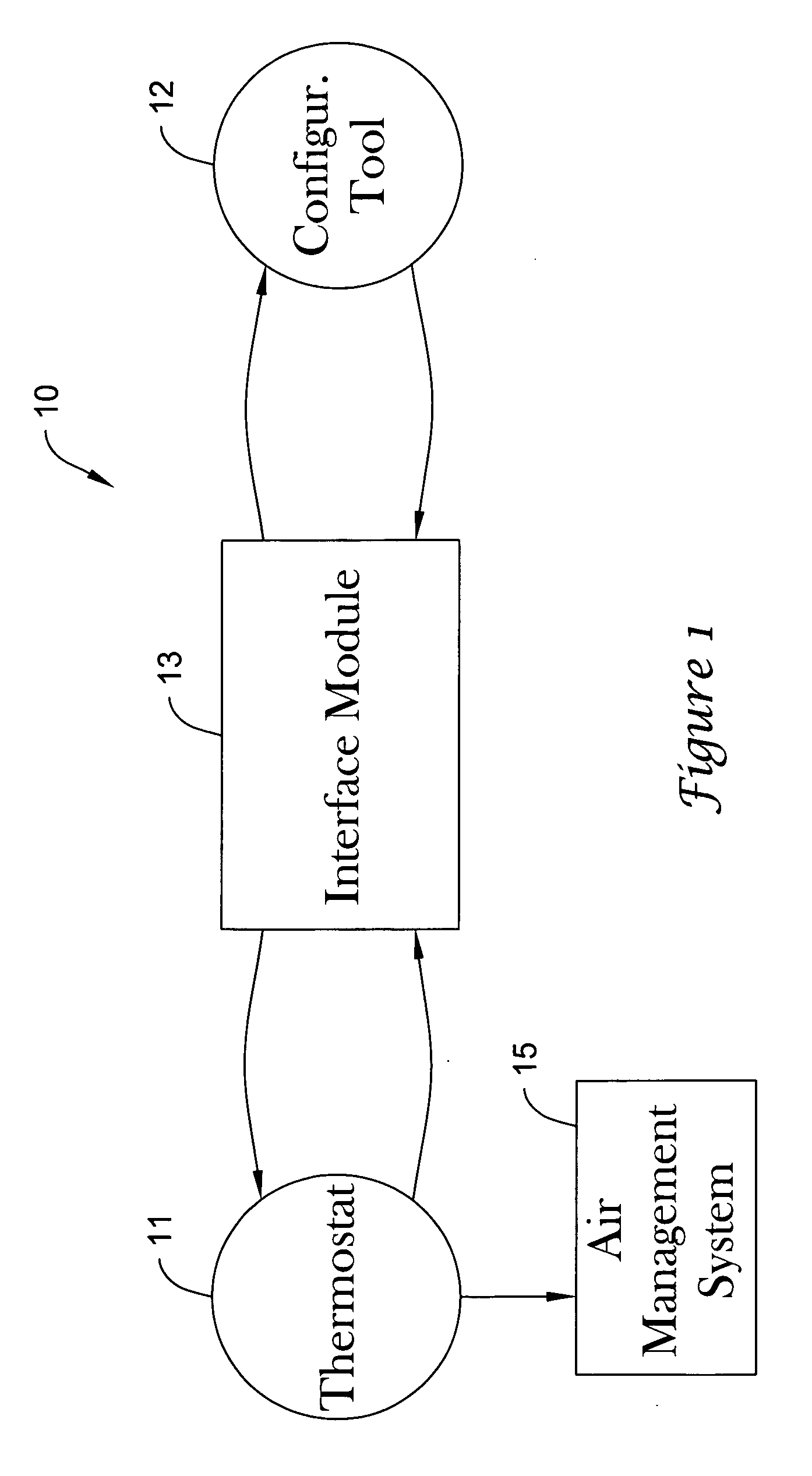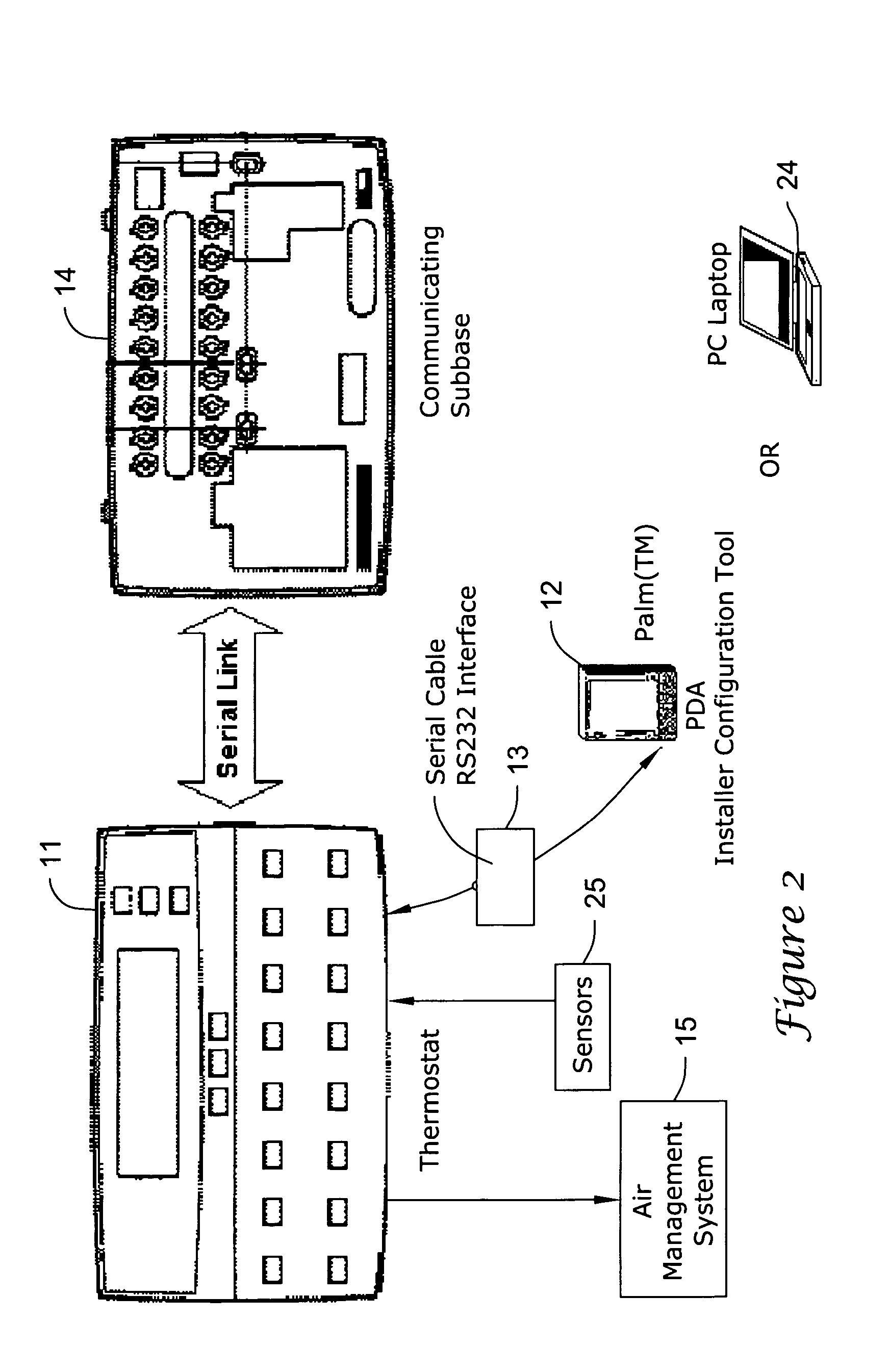Thermostat having modulated and non-modulated provisions
a technology of thermostats and provisioning, applied in the field of thermostats, can solve the problems of inability to adapt to the needs of different types of commercial and residential places, inability to provide comfort with ease, and inability to provide cooling or heating at one stage, etc., to achieve the effect of quick and efficient and easy adaptation
- Summary
- Abstract
- Description
- Claims
- Application Information
AI Technical Summary
Benefits of technology
Problems solved by technology
Method used
Image
Examples
Embodiment Construction
”, which may result in the next screen as illustrated in FIG. 4c. Here, one may click “Downld”, which may bring a screen as shown in FIG. 4d. Then one may click “OK” to connect the PDA serial port to the T7350 thermostat. On the other hand, one may configure a new arrangement and then connect in FIGS. 5a, 5b and 5c. One may click a “New Config” on the opening screen of FIG. 5a and enter the new configuration name and its description on the next screen in FIG. 5b. The thermostat may be configured clicking the “Next” button to navigate it for entering the new configuration selections, features and settings. Clicking the “DownLd” button may result in the screen of FIG. 5c for the opportunity of serially connecting the PDA 12 port to thermostat 11.
FIGS. 6a through 6c relate to connecting and modifying the existing configuration. On the opening screen of FIG. 6a, one may click “Upload Config” and get the connecting screen in FIG. 6b where one may connect the PDA to the thermostat by clic...
PUM
| Property | Measurement | Unit |
|---|---|---|
| Temperature | aaaaa | aaaaa |
| Temperature | aaaaa | aaaaa |
| Temperature | aaaaa | aaaaa |
Abstract
Description
Claims
Application Information
 Login to View More
Login to View More - R&D
- Intellectual Property
- Life Sciences
- Materials
- Tech Scout
- Unparalleled Data Quality
- Higher Quality Content
- 60% Fewer Hallucinations
Browse by: Latest US Patents, China's latest patents, Technical Efficacy Thesaurus, Application Domain, Technology Topic, Popular Technical Reports.
© 2025 PatSnap. All rights reserved.Legal|Privacy policy|Modern Slavery Act Transparency Statement|Sitemap|About US| Contact US: help@patsnap.com



